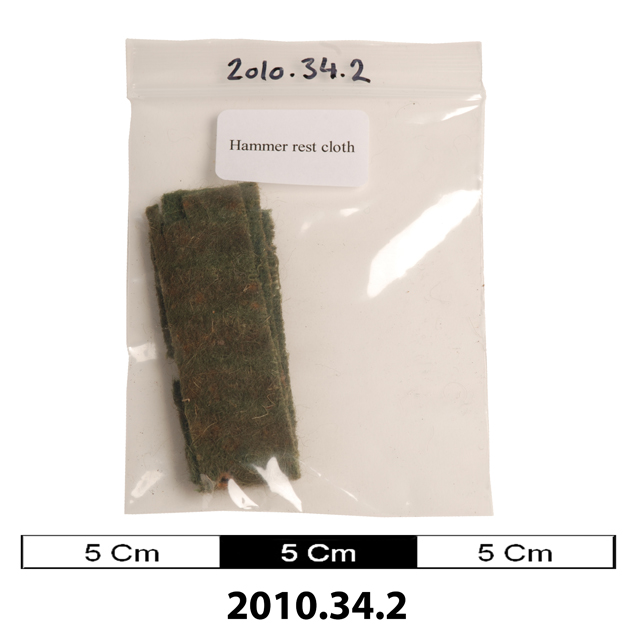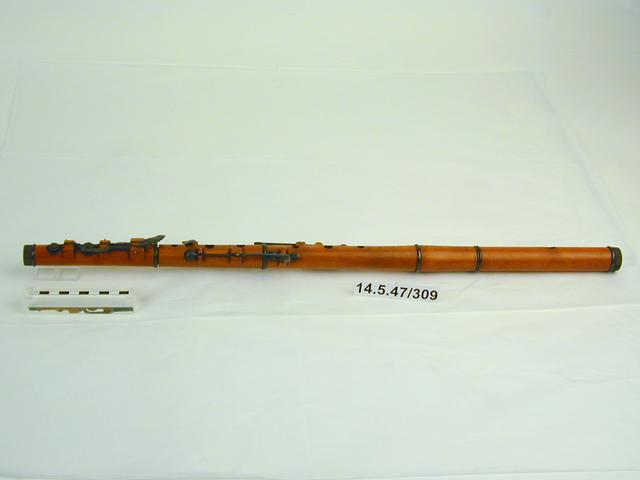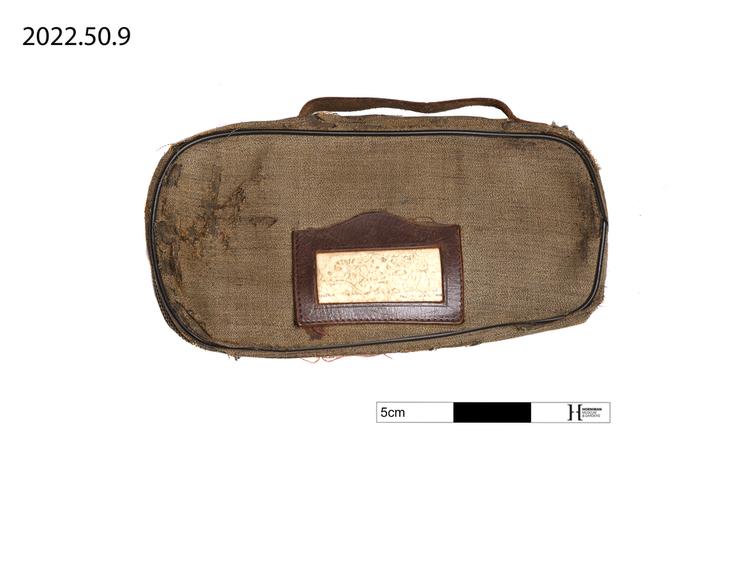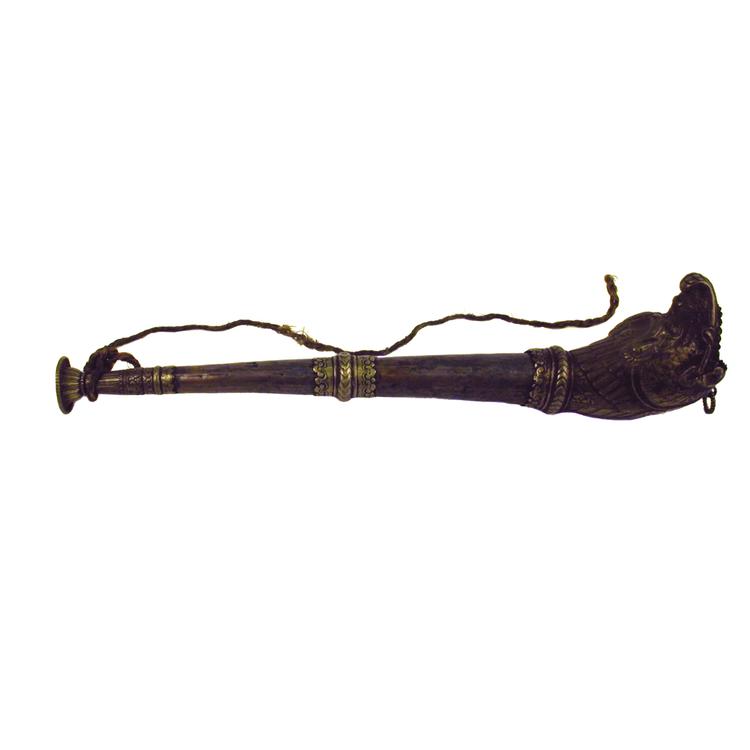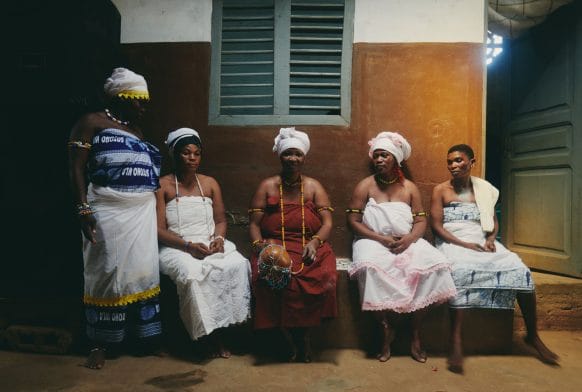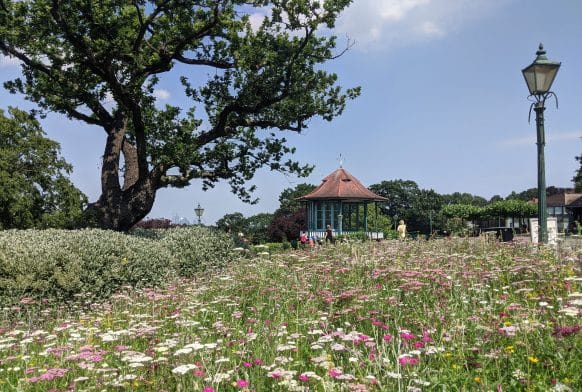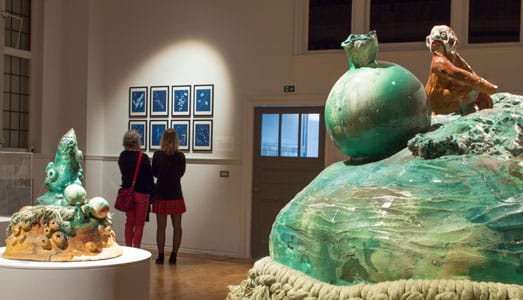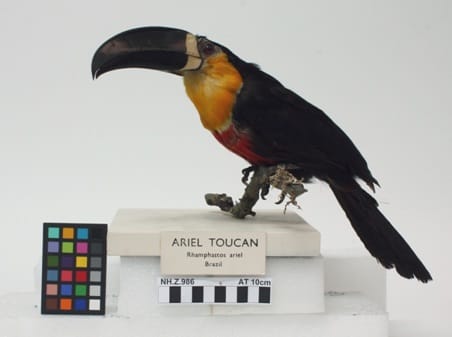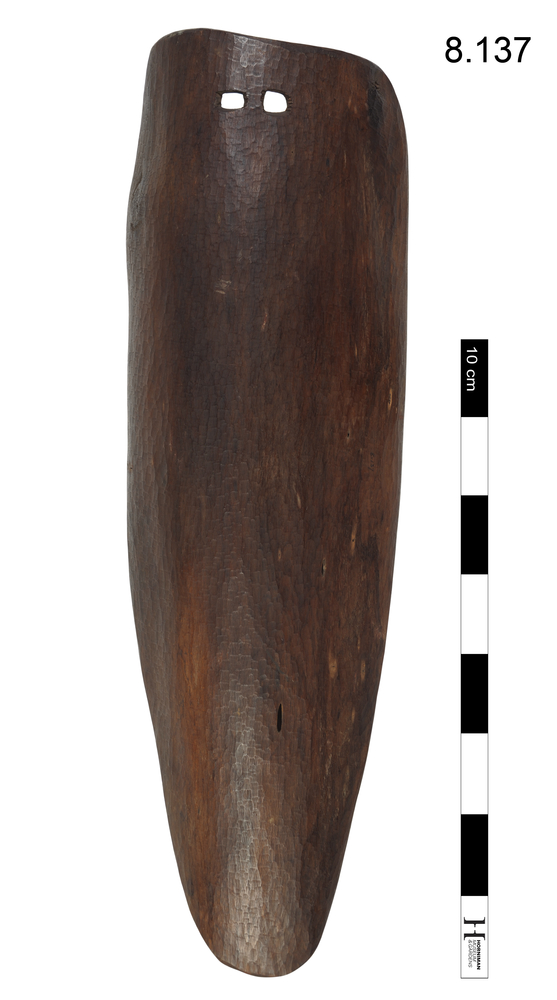
Stamping board of wood, for marking time during song or dance. The underside decorated with bands of geometrical patterns. The narrow end is stuck into the ground while the player stamps on the convex board. See M.V. Portman 'Andamanese Music' in the Journal of the Royal Asiatic Society of Great Britain and Ireland. New Series, Vol 21, 1888, p.181-218. ' It is almost invariably made of "Chalanga" wood (Pterocarpus dalbergioides, "Padouk")'. For an image showing performance technique see E. Edwards 'Science Visualized: E.H. Man in the Andaman Islands' in Anthropology & Photography 1860-1920 ed. E. Edwards (New Haven and London:Yale University Press, 1992), plate 70. See A.M. Meerwath 'A Guide to the collection of musical instruments exhibiited in the ethnographical gallery of the Indian Museum, Calcutta' (Calcutta, 1917), p. 28 for description of a similar instrument, local name 'pukuta yemnga', donated by the Asiatic Society of Bengal.



